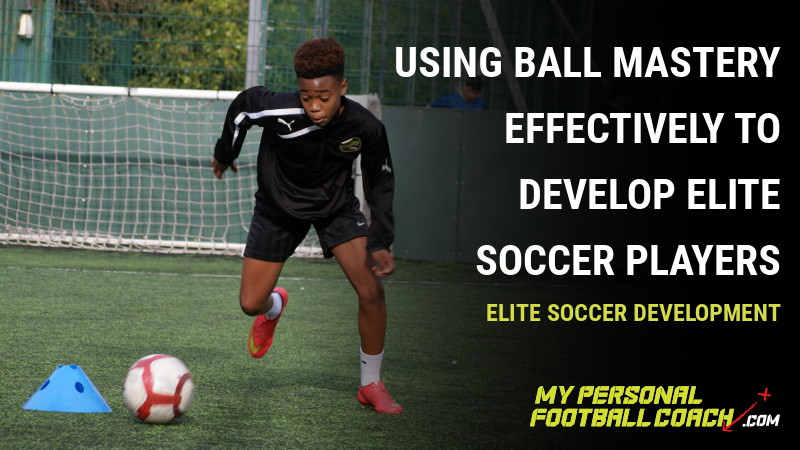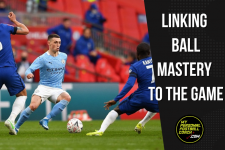
How do we make ball mastery sessions deliberate practice?
It pains me to see Academy coaches doing ball mastery sessions which are hands off “show me your ideas…” and that’s it! Whilst it is imperative to let the players show what they can do, we must look to challenge the players and take them out of their comfort zone. It is only then that we can qualify this as deliberate practice. This is not just to improve them technically, but as we know the opportunity for physical gains at this young age are vast.
“it’s generally excepted that childhood offers a key time frame to learn and improve fundamental movement patterns and develop neuromuscular coordination” (Lloyd & Oliver)
We are doing a disservice to young players if we don’t support them with their dynamic movement on their weak side for example. Just as we make young children do handwriting practice daily to improve their control and dexterity of their hands, for this very same reason ball manipulation and dynamic movement with the ball is imperative to improve a players ball control and movement patterns. Movement development has become a key part of academy football as sport scientists create programmes to enhance this area.
Having an environment that is integrated with a dynamic movement training programme will not only enable children to exploit the natural windows for learning but may also help to achieve a level of motor performance that is beyond their expected future potential (Myer et al). We talk about making our sessions more game realistic and for this reason I argue our movement programmes should also include dynamic ball mastery like this.
Dynamic Ball Mastery
Dynamic and explosive movements on both sides
Ball Mastery sessions should be at a high intensity to try and replicate the speed of a game with the players continually working at their maximum, challenged to control and manipulate the ball. Can you add interference? Move to working in tight spaces surrounded by team mates so players have to play with their head up. If is not challenging for the player it won’t be beneficial!
1v1 Technqiues are key
1v1 techniques are an important part of ball mastery, as we develop functional explosive movement patterns in players but also expose players to different 1v1 techniques used by players in the pro game. I read a blog previously that regarded showing player’s 1v1 techniques as stunting creativity. I talk about this extensively in a 3 part series to refute this and I would argue that this author doesn’t really understand primary age players and how they learn and develop. Children learn from seeing others doing things, whether it is watching Gareth Bale dominate in games or simply seeing how adults communicate with each other. As adults we are always modelling and children are always watching.
Combining Ball Mastery with 1v1
So, next time your planning your sessions, don’t only look at ways players can take ownership and make decisions, look also how you can support positive changes in a players functional movement patterns and technique.






